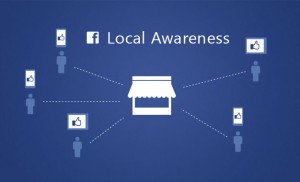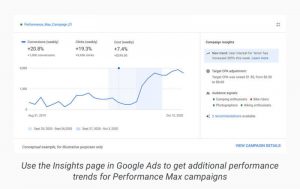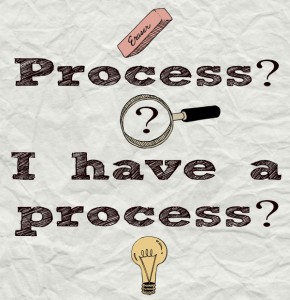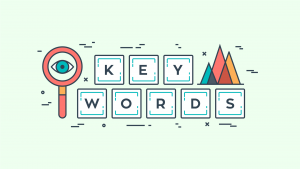Mira Murati and David Droga on why creatives should—and shouldn’t—worry about AI
In an exclusive interview, OpenAI’s Chief Technology Officer Accenture Song’s CEO discuss the inevitable impact of AI on advertising and marketing.
BY Jeff Beer
When the global advertising and marketing industry converges in the south of France this week for the Cannes Lions, the most popular topic of conversation will undoubtedly be AI.
Over the last two years, brands and marketers have embraced AI, both creatively and operationally. Some creatives are already all-in. A new report from United Talent Agency, which surveyed more than 500 creative professionals across advertising and entertainment, found that 75% say they are creating higher-quality work by using AI. But the technology comes with a cost: A 2023 Forrester study predicted up to a third of U.S. ad agency jobs would be lost to AI by 2030.
At Cannes, OpenAI Chief Technology Officer Mira Murati will join advertising legend and Accenture Song CEO, David Droga, on stage to discuss this two-sided coin and how it will impact the overlapping industries of advertising, marketing, and media.
In the session, called “When AI Challenges and Champions Human Creativity,” the two executives are aiming to show how AI is not a competitor to human creativity, but a collaborator. In advance of their discussion, I spoke with Murati and Droga about why they wanted to have this conversation, what creatives get right (and wrong) about AI’s influence, and how advertising fits into the future of AI products.
This interview was condensed and edited for space.
People often position AI as a binary when it comes to creativity—good or bad. From that perspective, it’s interesting that the two of you are on stage together discussing such a hot button issue. Why did you want to have this conversation together?
David Droga: I think it’s important we hit it head-on. It’s funny, as someone who’s a creative all the way through, and pretending to be a CEO, people want my point of view on it. I feel like people like to pit us—technology and creativity—against each other, and it’s the exact opposite of that.
I know the anxiety, or the nervousness, in the creative industries. I want them to understand our points of view, and how much we believe in the power of what Mira and her crew are building and researching and developing. It’s a great thing for creative people who are open to the way things are going. Success is not nostalgic.
Every time there’s been a tech revolution in creative, there was always an argument that this was going to devour everything, the storytelling, narrative, and creative jobs, but actually, things evolve. There was always new opportunities and you saw creativity go to new places and allow us to do things we couldn’t do before. . . . [but] we’re not going to pretend that there are going to be jobs that don’t disappear.
What does the creative crowd get right—and wrong—about AI’s impending impact on their jobs?
Droga: I think everyone’s judgment is very much in first phase of [thinking about] roles that AI is going to make redundant. The role of the copywriter, the role of the art director, the illustrator. It’s quite functional or literal reactions at this stage. . . . Early days, I think a lot of brands and clients see the efficiencies, and I understand that. There are a lot of efficiencies to be made. I’ve said this before, but not all creativity . . . is worth preserving.
Let’s do a better job of that and raise the bar. There’s still a necessity for originality, there’s still the necessity for innovation—these things that never go out of style, along with taste and nuance of understanding and empathy. There’s all these wonderful facets of creativity that can’t be outsourced. But if you have tools that allow you to think faster, and see things differently, and get things out, create things and shape things, I think that’s a great thing. The natural resource of human imagination and taste is still there. I just think a lot of people are still very much protective of what is now.
I just want people in the room to understand that. Educate yourself; don’t wait downstream to understand what happens. Get involved and understand what you can do; you can help create some of the precedents. That’s why I want the industry to be more optimistic.
Mira Murati: I agree with what David said in terms of framework for collaboration between AI and humans and sort of seeing them as these collaborative tools. The question of humans amplifying some sort of innate capability is a really old one. We’ve always pushed the bounds of our knowledge, and that’s pushed the entire civilization forward. And now we are starting to get this glimmer into what it means to extend thinking and creativity . . . we’re learning how that will work.
This is an iterative process. Our approach to this is to basically work with stakeholders very early on, to get the sense of: Where does the technology help them? Where does it move the needle? How do you shape the technology into a helpful, useful aligned product with what they’re trying to do?
This is very much the process that we followed with DALL-E. When we built DALL-E it was just a technology. The iterations were only able to happen by partnering very closely with people from different domains—creators, artists, storytellers—and understanding their feedback, then baking that into how we shape the technology. I don’t think we alone in the AI labs can figure out in a vacuum how to best shape the technology and deploy it in a way that’s actually maximally beneficial to people.

Tell me about how you both are thinking about ethical considerations and safety measures guiding AI development—how it applies to commercial creative work in particular.
Murati: For the technology in general, we’re focused on issues of bias, misuse, hallucinations, and enabling people to understand whether content is AI generated or not.
For DALL-E 3, we have implemented metadata that follows the content on the internet, and you can trace the AI [that’s] generated. This is obviously very important, especially in this year—a massive global election year. Deepfakes are obviously unacceptable, so we’re developing technologies to help people to understand when content is AI-generated.
We’re also working on classifiers that we’re currently red teaming for DALL-E images, so you can detect when it’s a value generated image. And we’ve also been researching and working on watermarking for text, so we can have technologies to deal with misinformation and understand content, provenance, and so on.
But again, these types of issues are both social and technological. You need both to deal with issues of misuse, misinformation, and disinformation in a robust way. So, we’re approaching it from both sides.
Droga: From an Accenture point of view, I mean, obviously, it’s well known that we’re spending $3 billion over the next couple years on our AI. And I think that while we talk a lot about the studios, the training and the hiring, and how we’re deploying that, actually the biggest amount we’re spending is on responsible AI; really putting the guardrails in place to make sure that we start from the right place, as opposed to course correct, and reverse engineering. Trying to make sure that they don’t just understand the technological influence, but what gets credited and how it gets credited. We’re not only there to educate our clients, and bring our clients opportunities, we’re also there to point out the pitfalls.
Mira, how do you think about the role that advertising will play in AI platforms—more specifically on OpenAI’s products?
Murati: We don’t have any plans to do that right now. My personal opinion is that we should prioritize the product being useful and aligned with a user intention and behavior, whether it’s explicit or implicit intention. Basically, alignment of the technology with industry intentions (and) societal intentions is a key thing.
Right now, (advertising) is not our business model. We don’t have advertising in our products. We have subscriptions and free use. We don’t create user profiles. We don’t do recommendations. It’s just not our business model. So yeah, right now there’s no plan for integrating advertising in the product.
David, as an advertising guy, do you look at OpenAI’s tools and think about the ad potential there?
Droga: I’m a bit of a contradiction that way. Just because something has a lot of traffic and attention doesn’t mean there should be advertising. That’s why most people hate advertising, because we crowded everything as a toll to everywhere you like being.
I think putting all the focus on making sure that it’s democratized, useful and safe, that’s the key. With monetization, it’ll find its own way.
ABOUT THE AUTHOR
(10)
Report Post





